Don't wanna be here? Send us removal request.
Text
How To Exercise My Lungs
Did you know that even your lungs need exercise to stay healthy and keep your body functioning properly? Your lungs provide you with the most valuable element necessary for life: oxygen. Every cell in your body needs oxygen to survive. The more freely it flows through your system, the more energized, alert, and productive you will feel.
With regular practice, you can train your lungs to increase their capacity, which will help you take in more oxygen. This, in turn, will protect the body from various breathing disorders, help increase endurance, and ensure that every part of the body gets enough oxygen.
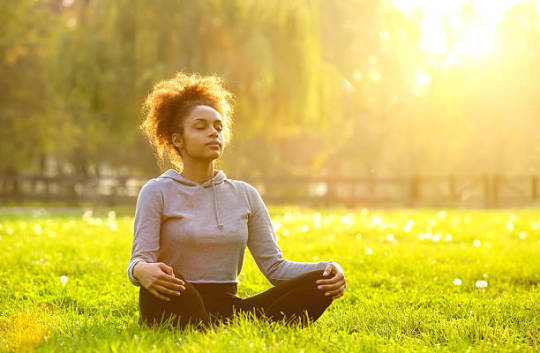
Here are a few ways to exercise your lungs, increase their capacity and help them work more efficiently.
Breathing exercises
Breathing exercises help the lungs work more efficiently. If you have limited lung capacity, breathing exercises can help restore diaphragm function and improve your lung health. OPUMP Breathing Trainer can provide classes to help you do breathing exercises at home on your own, which not only have many benefits for lung health, but also for overall health and wellness.
1.Belly Breathing
Inhale through your nose and push your belly outward.
It's the exact opposite of sucking in! Now exhale through your mouth and push it out
Do abdominal breathing:
Place one hand on your belly. Place one hand on your upper chest.
Focus your breathing on your abdomen.
As you inhale, your hands on your abdomen should be raised.
As you exhale, your hands on your abdomen should be lowered.
Breathe in through your nose. Exhale slowly through pursed lips.
Start on your back. Then sit down and try. Then try standing up. Finally, try it as you do the activity.
2.Pursed Lips Breathing
This should fall like smelling a flower or blowing out a candle.
Do a pout breath:
Breathe in through your nose (as if you are smelling something) for about 2 seconds.
Pursed his lips like he was about to blow out the candles on his birthday cake.
Exhale very slowly with your lips pressed together, twice as long as you inhale.
Try to increase your time
2 seconds in: 4 seconds out
4 seconds in: 8 seconds out
8 seconds in: 16 seconds out
Interval training

If you have difficulty breathing or shortness of breath while exercising, interval training may be a better option for stabilizing your workout.
Interval training involves alternating between more strenuous and less strenuous exercises. For example, a person might try walking at a very fast pace for one minute, then at a slower pace for two minutes, and repeat.
Similarly, a person can do a one-minute strength training activity, such as a bicep bend or lunge, and then walk at a light pace for 2-3 minutes.
Interval training gives the lungs time to recover before challenging them again.
Whenever exercise causes shortness of breath, it is best to slow down for a few minutes. It can help practice lip pursed breathing until the breathing difficulties subside.
Summary
Lung exercises, such as lip pursing and abdominal breathing, can help a person improve lung function.
However, it's a good idea to consult your doctor before trying any new exercise, even breathing exercises. This is especially true for people with underlying health conditions, such as chronic obstructive pulmonary disease.
0 notes
Text
5 Health Benefits of Deep Breathing
Every day, you breathe thousands of times without even thinking about it. The inhalation and exhalation processes allow fresh oxygen to enter the bloodstream as carbon dioxide is removed from the body. However, deep breathing is a conscious practice that provides many health benefits beyond the standard breathing required for life.

When it comes to improving our health, many of us focus on areas where we can easily quantify and track, such as how many carbohydrates or calories we consume, or how many times a week we exercise. Although it may be harder to measure, reducing and managing stress is a key component of staying healthy. Chronic stress has been linked to heart disease, high blood pressure, diabetes, depression and anxiety, according to the National Institute of Mental Health.
Deep breathing exercises are an effective and simple solution to reduce stress. Even better, deep breathing is good for your body and mind. Let's discover how deep breathing can have a lasting positive impact on your life!
Reduce anxiety and depression
Deep breathing exercises allow you to relieve stress in a safe and healthy way. By taking a few minutes each day to find a quiet place and focus on your breathing, you can better manage your symptoms and gain a sense of calm in your daily life.
Relieve pain
Consciously breathing not only puts you in a more relaxed position, it also allows your body to release endorphins, which also play a key role in reducing your perception of pain.
Lower blood pressure
Deep breathing exercises help lower overall blood pressure and can help improve cardiovascular health. Deep breathing not only keeps your entire cardiovascular system strong and healthy, but also helps you feel more relaxed in all aspects.
Boost immunity
Regular deep-breathing exercises can also have a positive impact on your immune system. This phenomenon occurs due to oxidation. The more you focus on deep breathing, the more oxygen you provide to the blood in your veins.
Improve concentration
While brief periods of stress can help us focus more clearly, especially on work tasks, prolonged periods of stress can make our brains a bit fuzzy. But one of the most significant benefits of deep breathing is improved concentration.
Deep breathing technique
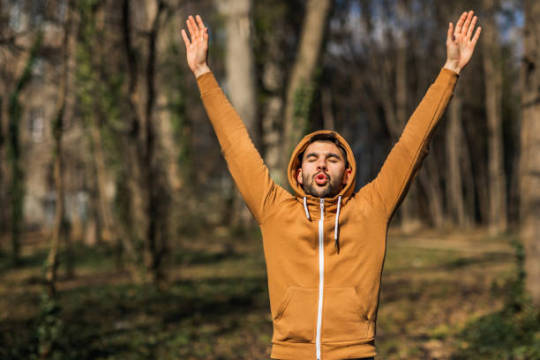
There are many different ways you can try to breathe deeply from your abdomen instead of your chest. To help, you can opt for the OPUMP Smart Breathing Trainer, which offers a variety of breathing training classes that you can try different exercises to see which one gives you the greatest sense of calm.
Diaphragmatic breathing
Sit or lie flat on your back. Place one hand on your belly and one hand on your chest. Breathe in slowly through your nose to expand your abdomen and make sure your chest doesn't move. Exhale slowly through slightly open lips as if you were whistling. Push all the air out of your abdomen with your hands and repeat this exercise 3 or more times.
4-7-8 breathing
It's similar to abdominal breathing. Simply perform the above exercise in the same way, but with a count. As you inhale, count to four, then hold your breath for a count of seven. Exhale for a count of eight, then push all the air out of your stomach again with your hands. Repeat as needed.
Deep breathing isn't just an exercise that fits into your daily routine. While consciously breathing may be a simple process, it brings many benefits and has the potential to improve many different areas of your life. Starting today, practice deep breathing!
0 notes
Text
Why Breathing Exercise Is Important?
It's a fact of life we take for granted that breathing is with us from the moment we are born. One of the most basic functions of the human body, breathing not only provides oxygen to the body, but also clears fog from the mind and helps build muscles. However, at any moment we have difficulty breathing, we suffer immediately. The pain can be caused by physical dysfunction due to lack of oxygen or a surge of fear when we feel our connection to life is threatened. Breathing is so important, so powerful. It affects every metabolic function, your energy level and how you feel afterward.

But very few people learn how to breathe in a way that allows the body to function the way it's supposed to. It seems strange to think that we should "practice" breathing. After all, it's something we've all done since our first seconds on Earth. We do this all day, every day without really thinking about it.
If you turned your attention to your breathing now, would you notice your stomach moving, or would you notice your chest moving? For most of us, our breasts move. While this may feel natural to us now, it's actually hurting our bodies.
When we inhale, we take in oxygen, expanding our lungs and pushing down our diaphragm. When we exhale, we expel carbon dioxide, our diaphragm rises, and our lungs contract.
When we take shallow breaths, oxygen may not reach the lowest parts of our lungs, which are filled with oxygen-dependent blood vessels.
Can regular breathing exercises help us learn how to breathe properly and have health benefits
Deal with an anxiety or panic attack: Lie down immediately, arms crossed, and take a moderate but prolonged breath. Keep breathing until the acute anxiety subsides.
Reduce your stress load: To really do this effectively, you need to spend about ten minutes a day just sitting and breathing. Reducing your stress load means that the power of breathing can help you not make a mental connection in any situation.
Increased resistance to stress: Each inhalation causes a sympathetic response, so your heart increases slightly, and each exhalation causes the opposite response, a parasympathetic response that slows your heartbeat. Clinically, it is known as heart rate variability (HRV) and is considered a good indicator of resilience in response to stress.
Improve your sleep: When you practice breathing through dedicated exercises, you can breathe more naturally through your nose at all times, including while you sleep.
Breathing exercises can improve the capacity and function of the diaphragm, your main breathing muscle, which in turn leads to easier and deeper breathing.
Increase the elasticity of the lungs, because when you sit and repeat guided, regulated breathing, they are actually being trained in a physical sense.
Regular breathing practice and proper breathing can help protect your spine. Each good breath provides movement for the discs in your back, as well as for the diaphragm from the muscles of your back and chest, both of which affect the spine and provide muscle support by massaging it with each breath.
The trained respiratory system can now work better for 24 hours and can also improve 24-hour oxygen absorption and delivery. This actually means your cells are getting better nutrition, which affects all physiological and physiological functions, including brain cells. It is important to understand that during breathing exercises, you will not take in more oxygen because the breathing will become slower and slower. Train your respiratory system to regulate the unconscious breathing activity that's going on, so it starts to work better during the day and night. This is a huge benefit. The only way to get this benefit is to do regular breathing exercises. You may need a breathing coach like OPUMP to help you better understand, train and control your breathing.

Every system in the body depends on oxygen. From cognition to digestion, effective breathing not only clears your mind, but also helps you sleep better, digest food more efficiently, improve your body's immune response, and reduce stress. Many people who practice yoga, especially those who focus on practicing pranayama or breath control, have been shown to regulate the sympathetic nervous system, or parts of the body that control breathing, heart rate and blood pressure.
0 notes
Text
The Power of Breath

Did you know that 70% of toxins in your body are excreted through your lungs? Breathing is essential to life, but today we use less and less lung capacity. Think about it. When you are stressed, do you breathe deep or shallow? You'd be surprised how often we hold our breath!
Breathing is one of the most powerful tools we can use for self-regulation, energy generation, and overall health. Read more to learn how to control the power of your breath to relieve daily stress and improve your overall health.
The Benefits of deep breathing

Everyone has experienced stress. Chronic stress is considered a national epidemic that can lead to health problems like heart disease and digestive problems. Deep breathing sends a message to the brain to relax, which tells the body to reduce its stress response. In short, breathing retrains our nervous system to respond to triggers.
Improve your mood
In a series of papers in 2005, Brown and Gerbarg proposed a neurophysiological model for the treatment of depression, anxiety, and stress using yoga breathing exercises. They also presented a systematic review of evidence supporting the use of yoga breathing to manage stress, anxiety and depression.
Maintain and improve lung health
A systematic review in 2009 found that abdominal breathing exercises enhance important diaphragmatic strength and endurance and reduce breathing difficulties. Can help people with lung conditions such as asthma and chronic obstructive pulmonary disease control certain aspects of their disease, improving health care-related quality of life in the short and long term.
Relieve pain
Deep breathing triggers the release of endorphins, which not only helps create a sensation, but also fights pain.
Boost immunity
When your blood is fully oxygenated, it carries and absorbs nutrients and vitamins more efficiently. In essence, the cleaner the blood, the harder it is for the disease to stay in your system.
Lower blood pressure
When your muscles relax, this allows your blood vessels to dilate, which improves circulation and lowers blood pressure. Deep breathing also slows and regulates the heart rate, which also helps lower blood pressure.
Improve digestion
The deeper you breathe, the healthier blood flow you'll generate, which in turn encourages your organs to function more efficiently, including your gut.
How to harness the power of breathing
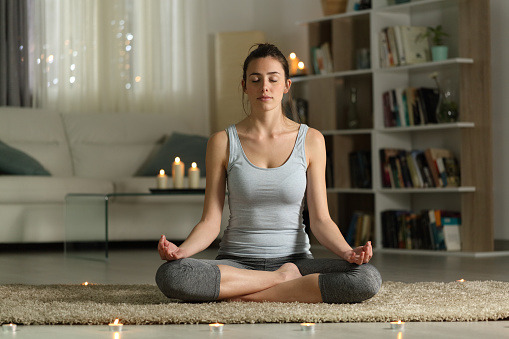
Find time in your daily routine. Breathing exercises are quick and take just a few seconds to a few minutes a day to reap the benefits. Plan for rest and deep breathing throughout the day. Of course, take a moment to breathe between these set times if necessary.
Practice anytime, anywhere. Breathing techniques are easy to learn, and the OPUMP Breathing Trainer helps you practice them in your car, in the shower, at work, and even in a busy crowd. Whenever you feel the need to take a deep breath, take a deep breath!
Choose from a variety of exercises. Certain breathing exercises appeal to different people. Take the time to learn different techniques or stick with the ones you love.
If you want to calm down...
The 4-7-8 breathing
This technique is perfect for bedtime or any time you need a moment of calm. Come to a comfortable sitting position, close your eyes, and do the following:
●︎ Place the tip of your tongue on the roof of your mouth, just behind your front teeth. Hold this position during practice.
●︎ Breathe in quietly through your nose for four seconds.
●︎ Hold your breath for 7 seconds.
●︎ Exhale forcefully through your mouth, pursing your lips and making a whooshing sound for eight seconds.
If you want to increase your energy......
Start with four cycles to feel the effects, but be careful not to sit more than eight times at a time.
Bellows breath
Bhastrika or bellows breathing is the first thing you do in the morning or afternoon when you're down, or to get you pumped up for a workout. Get into a comfortable sitting position and do the following:
●︎ Breathe in and out through your nose.
●︎ tighten your stomach, pulling it in on the inhale and pushing it out on the exhale.
●︎ Holding this position, begin to exhale forcefully through your nose, then inhale deeply and forcefully
●︎ continue this operation at a rate of 1 second per cycle.
Start with 10 reps, followed by short normal breathing breaks of 15-30 seconds.
Five minutes of daily breathing exercises can make you more familiar with these energy techniques, while also providing you with major health benefits, such as better sleep and lower blood pressure.
In your lifetime, you will breathe about a billion times. Use them to your advantage. You can practice breathing anytime, anywhere! You can choose to try different techniques, find breathing exercises that work best for you, and use the power of your breath several times a day or several times a week to restore your body.
0 notes
Text
Are you Breathing Optimally?
Breathing is essential to life. Despite its importance, we are rarely aware of the way we breathe. You may be surprised to learn that there are right and wrong ways to breathe, and you may also be surprised to learn that if you don't breathe correctly, it can negatively affect your health in the long run.

What is optimal breathing?
Stop and take a deep breath. When you breathe in, do your shoulders stretch your body up? Then, as you exhale, does the shoulder fall back and contract your chest?
If your answer is yes, you are wrong.
This is called vertical breathing. Although it feels like you're really opening up those lungs, you're just letting air into the top of them.
The American Lung Association (ALA) offers the following tips on how to breathe properly.
With his nose

Breathing through the nose slows breathing and allows the lungs to work more efficiently. It also contributes to the uptake of nitric oxide, which helps transport oxygen around the body.
Breathing through the nose also allows the nostrils to:
Filters toxins and allergens from the air to prevent them from entering the body
Too cold warm air
Humidify too dry air
However, if a person is exercising or has sinus congestion, sometimes breathing through the mouth is necessary.
The belly

The most efficient way to breathe is by blowing air down into the abdomen. As the diaphragm contracts, the abdomen expands to fill the lungs with air.
"Abdominal breathing" is effective because it pulls the lungs down, creating negative pressure inside the chest. This brings air into the lungs.
Why is optimal breathing important for your health?
It filters particles and microorganisms from the air
Fills the lungs with more volume and increases the exchange of blood from the lungs
Keep carbon dioxide levels in the right balance
Maintain an ideal pH in the blood
Support to digest
Improves mood, energy and memory
Helps regulate the body
Improve posture
What causes it?
If you now know you're not breathing correctly, you might be wondering how it happened. After all, breathing is a subconscious process. It's just something your body does automatically, so how does it start breathing the wrong way?
Here are a few possibilities:
Stress - Stress can cause short breathing.
Posture problems - That hunched position causes your chest to collapse slightly, meaning your lungs can't always fill up when you inhale.
Obesity - When you have more fat, there is more tissue that pushes your chest and diaphragm. This makes it harder for your lungs to fill up completely when you breathe, so you breathe for less time than you need.
Tips for healthy breathing
Maintain a healthy lifestyle
Exercise Regularly: Regular aerobic exercise helps increase lung capacity, which is the amount of oxygen a person can absorb with each breath.
Control your weight: Being overweight increases a person's risk of developing breathing difficulties, such as obstructive sleep apnea. People can reduce this risk by maintaining a moderate weight.
Practice good posture. Practicing good posture helps ensure that your chest and the chest area of your spine are fully expanded.
Breathing exercises
Whatever the cause of your breathing pattern, there are some simple exercises that can help you get back to proper breathing exercises.
The ALA recommends two different breathing techniques for people to try: lip pursed breathing and diaphragm breathing.
Lip pursed breathing:
Sit in a chair and relax your neck and shoulder muscles.
Breathe in slowly through your nose, keeping your mouth closed. Breathe in for 2 seconds.
Puckered or pursed lips, like whistling or blowing out candles. Exhale slowly for 4 seconds.
Repeat the above steps
Diaphragmatic breathing:
Sitting or lying down
Place your hands on your stomach and feel the rise and fall of each breath.
Close your mouth and inhale slowly through your nose while feeling your belly rise and inflate like a balloon.
Exhale slowly through pursed lips, as if blowing bubbles, each exhale taking about two to three times longer than each inhalation.
Repeat these steps for 5-10 minutes. Place your hands on your abdomen to help increase awareness of proper breathing techniques.
You can get more breathing exercises to improve your breathing on OPUMP. It may take a while to train your body to breathe properly again. Spend some time each day doing one of these exercises, or just slow down and focus on the way you breathe.
0 notes
Text
What is Paradoxical Breathing?
Paradoxical breathing is a general term for a series of respiratory distress states.
In some cases, paradoxical breathing may be acute and require urgent action. In other cases, it can be a long-term problem. It can flare up when you feel stressed, leading to panic attacks and/or prolonged breathing difficulties.
In paradoxical breathing, the chest and abdomen function in opposition to each other. On inhalation, the chest expands (moves up and out) while the abdomen moves inward, raising the diaphragm and reducing lung volume.
Another term for abnormal breathing is chest breathing.
In a normal, healthy breathing pattern, when you inhale, your diaphragm moves down. At the same time, your abdomen expands away from your spine. During the exhalation, your diaphragm moves up and your abdomen retracts inwards into your spine.
This is also called diaphragmatic or abdominal breathing.
What is diaphragm?
The diaphragm is a muscle between your lungs and your heart that lets air in and out as you breathe.
When you inhale, your lungs expand and fill with air. Your diaphragm pushes down to reduce pressure in your chest and allow your lungs to expand. In paradoxical breathing, when you inhale, the diaphragm moves up and the lungs don't expand much. This prevents you from getting enough oxygen, which is important for many body functions. It also makes it difficult to exhale carbon dioxide, a waste product of the respiratory system.
What are the symptoms of paradoxical breathing?
Trouble catching breath
Fast heart rate
Neck and shoulder pain
Chest pain or weakness
Excessive sleepiness, also known as narcolepsy
Fatigue, or exhaustion that sleep does not alleviate
Wake up often at night
Poor athletic performance
What causes it?
1.Chronic stress

Photo by Nik Shuliahin on Unsplash
Many sub-problems can cause paradoxical effects in breathing (sometimes called double breathing or even hyperventilation) when chronic stress from work or other problems become an issue.
That is, the fight-or-flight response (brought on by chronic stress) leads to faster, shallower breathing -- actually an abdominal ambivalent type of breathing.
2.Obstructive sleep apnea

This disrupts the inflow of oxygen and the exhalation of carbon dioxide. Eventually, the chest wall turns inward instead of outward, which can lead to ambivalent breathing.
3.Nerve problems

The phrenic nerve controls the movement of the diaphragm and other key muscles of the trunk. Nerve damage can disrupt the normal movement of muscles in the trunk and cause breathing changes.
4. Lung problems
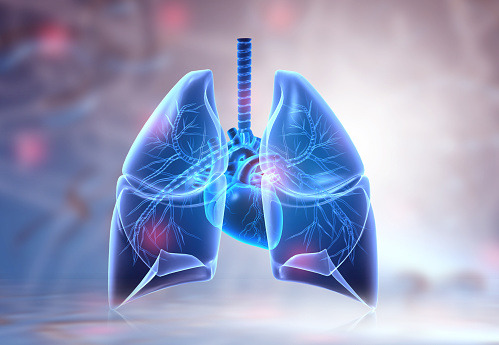
People with lung-related health problems (such as lung cancer, chronic obstructive pulmonary disease, asthma, etc.) are more likely to have paradoxical chest movements.
How to solve the contradiction of breathing?
If the problem is chronic and persistent, relearning how to breathe, especially learning how to perform abdominal breathing, will be necessary to resolve chronic ambivalent breathing.
In cases where other acute injuries or events lead to abnormal effects, emergency measures such as oxygen must be taken.
Breathing exercises can help improve your breathing and eliminate paradoxical effects. Here are some short examples of breathing exercises:
1. Take a deep breath
Stand or sit in a good position. Gently close your eyes. Get all the air out of your lungs. Now, breathe in slowly through your nose, and note:
Your abdomen (stomach) expands outward
Your chest and shoulders are still
You don't feel your chest moving -- especially not moving up
After inhaling deeply, begin to exhale out of your mouth. Note:
Your abdomen retracts into your spine (deflates)
Your chest and shoulders are still
You don't feel your chest moving -- especially not moving down
This is an example of how to breathe better with proper breathing patterns.
2. Practice square breathing
Square breathing is a simple exercise that can help calm quivering nerves, reduce stress and trigger a relaxation response. Do this whenever you feel overwhelmed or unable to breathe.
How this is done:
Using the correct breathing pattern above, first take a deep breath and count to four
Hold your breath and count to four
Slowly, exhale to the count of four
Hold your breath again for a count of four
Repeat this four-step process for about one to two minutes.
You can get more breathing exercises with the OPUMP breathing trainer.
0 notes
Text
What Is Water Weight?
If you keep track of your weight, you may notice that you fluctuate between a few pounds a day, regardless of your personal habits. First, you should know that the experience is completely normal, and that the weight you see constantly disappearing and returning could be: water weight.

Photo by manu schwendener on Unsplash
What is water weight?
Your body needs water (and a lot of it) to function: in fact, 50 to 70 percent of your entire body weight is water. Staying hydrated is essential for many body functions, including maintaining body temperature, cushioning joints, and getting rid of waste through sweat, urine, and feces.
Depending on your food and fluid intake, this amount may vary from person to person. It's one of the first things you lose, weight loss with changes in muscle, fat, and moisture. Water weight is the extra water stored naturally in the body along with certain nutrients, for example, carbohydrates when stored as glycogen, and salt (sodium).
What makes water heavy?
Increased salt intake

Photo by Emmy Smith on Unsplash
Eating too much salt can lead to water weight because your body retains water to dilute excess sodium in a high-salt diet. To avoid diet-related water gain, experts recommend a diet consisting mainly of healthy whole foods, including fresh fruits and vegetables.
Lack of physical activity

Photo by Gabin Vallet on Unsplash
Keep exercising to maintain water weight. If you happen to work in an office and spend most of your time sitting, try walking every 30 to 45 minutes.
Hormonal change
A 2015 study found that 92 percent of women experience water retention in the week before their period begins. This is actually quite common, as it can be caused by hormonal fluctuations that prepare your body for your period.
How does it affect weight loss?
As we mentioned earlier, the weight of the water may be one reason the scale keeps moving up and down. Therefore, it is important for those aiming to lose weight to be able to distinguish the difference between water weight and fat weight.
We can get ourselves a BodyPedia Smart Scale to help us. BodyPedia Smart Scale has been proved to be the first accurate smart scale for body compositions. It can help us target improvement areas, develop effective training, adjust diet, set attainable goals and track changes of body composition over time for success.
How to manage water weight?
Stay hydrated:Also, make sure you're drinking at least half your body weight. When you're well hydrated, you're less likely to maintain water weight.
Drink diuretic fluids:You can also try diuretic liquids, such as cranberry juice and tea, to flush excess water out of your body.
Exercise:Exercise is important to your health. Keeping your body active helps your overall circulation and blood flow. Sweating can reduce excess water.
Get enough sleep:When you're stressed and sleep deprived, your body releases cortisol, which can actually negatively affect your body's ability to balance vasopressin, which can cause water retention.
Bottom Line
The weight of water can be annoying because no one likes to feel bloated, but fortunately, it's a short-term problem. The weight of water fluctuates from day to day. That's why it's better to weigh yourself weekly than daily. Long-term changes in body weight can lead to changes in lean muscle or fat, which is exactly what you want. Finally, not drinking water won't help you lose weight -- it's just the opposite.
0 notes
Text
Breathing Exercises For Kids
For most of us, breathing is an automatic process we barely notice. However, the simple act of inhaling and exhaling can have a big impact on our mood and thoughts. Deep breathing has long been used as a relaxation technique that can help both children and adults. Breathing exercises are one of the most effective calming strategies for children dealing with difficult emotions when tempers start to flare, for example.
Breathing exercises help kids build social emotional and executive function skills: When kids use these techniques to express anger without hurting themselves (or others, or even things), they are better able to focus in class and form good friendships.
How can breathing exercises help children and adolescents?
Reduce stress and anxiety
Reduce tension
Stable blood pressure
Boost immunity
Increase energy levels
Breathing exercises for children
When it comes to deep breathing exercises for kids, the key is to make them fun and easy to remember when things get messy. To help incorporate breathing techniques into your child's life, we've compiled a list of the five best breathing exercises for kids.
Use bubble
Gently blowing air to create bubbles is a great way to have fun and take deep breaths. Children have to blow bubbles slowly and carefully, which is one of the main reasons I like to use it to help children take deep breaths.

Photo by Giu Vicente on Unsplash
Use a feather
Get some colorful feathers and pick out one feather to use. It could be a color they like, or it could be a color that makes them feel calm. Inhale for a count of 3, then exhale up one side of the feather and down the other.

Photo by Thomas Park on Unsplash
Smell the flowers and blow out the candles
Have your child pretend that he or she is holding a flower in one hand and a candle in the other. The first step is to smell the flowers, taking a deep breath through your nose to fill your lungs with air. Next, let your child exhale and blow out the candle with the other hand.

Photo by Caroline Hernandez on Unsplash
Animal breathing techniques
If your child loves animals, these animal breathing techniques may be the best practice for your child. Here are our favorite animal breathing tips and how to implement them correctly:
Snake Breath - Inhale through your nose for 3 seconds, hold for 1 second, and exhale with a snakelike hissing sound.
Rabbit Breath - three quick inhales through the nose, then one long exhale through the nose. Practice slowing the exhalation each time your child does this conscious breathing exercise.
Bumblebee Breath - Similar to rabbit breathing, bumblebee breathing requires you to inhale and exhale only through your nose. However, this deep breathing technique is also similar to snake breathing when it comes to animal sounds. That is, on the exhale, have your child buzz or buzz like a bee.
Use the OPUMP breathing trainer
OPUMP APP provides a wealth of training content, from standard breathing lessons to enjoyable breathing games, to help your child happily and effectively complete breathing training, and develop good breathing habits.
Get Started
Deep breathing is a great first calming strategy to teach children, and no matter how you choose to teach your child about these emotions and how best to deal with stressful situations, breathing techniques are a great place to start! Because it's always with them, you can make it fun and easy for them to remember. Try the five techniques above, choose the breathing exercise that works best for your child, and stick with simple belly breathing to start with.
0 notes
Text
How to Increase Blood Oxygen Level?
Blood oxygen levels, also known as oxygen saturation, your blood oxygen level is a measure of how much oxygen your red blood cells are carrying. Your body closely regulates your blood oxygen levels. Maintaining a precise balance of oxygen-saturated blood is vital to your health.
More than 20% of the oxygen you inhale goes to your brain. If this vital organ doesn't get enough oxygen over time, your brain cells start to die. Similarly, if your heart doesn't get enough oxygen, you're at risk for heart disease.
What Should Your Blood Oxygen Level Be?
Normal blood oxygen levels vary depending on a person's health history. For generally healthy people with no history of chronic disease, the normal range is between 95 and 100 percent. Any value below 90% is considered low. Low blood oxygen levels can cause uncomfortable or painful symptoms that, if left untreated, can lead to cyanosis.
However, for people with a history of respiratory diseases such as COPD or asthma, oxygen saturation can vary between 88% and 95%. Blood oxygen levels below 95% should always be assessed by a physician who can determine which range is considered normal. The normal range will depend on the patient's health history.
Symptoms of Low Blood Oxygen Levels
If you have a low blood oxygen level, you may notice several symptoms including:
Shortness of breath
Rapid breathing
Rapid heartbeat
Headache
Restlessness
Dizziness
Chest pain
Confusion
Euphoria
Visual disorders
Lack of coordination
How to Increase Blood Oxygen Level?
Drink lots of water: Properly hydrated lungs disperse oxygen into the blood more efficiently.
Breathe fresh air:Fresh air is good for your lungs and usually contains higher levels of oxygen.
Get active: Exercise is the key to a healthy life. With aerobic exercise, such as simple walking, the body makes better use of oxygen while clearing waste products through the lymphatic system.
Eat more iron-rich foods: Certain foods can help improve oxygen levels in the blood. Red blood cells need iron, so when you get more iron from your diet, they may function better (and carry more oxygen through your blood).
Breathing Exercises: Practicing proper breathing and conscious breathing techniques can strengthen your lung capacity and allow more oxygen to reach your bloodstream.
By using the OPUMP breathing trainer, you can track and continuously improve your lung capacity. It can remind you to maintain the breathing rate, duration and rhythm required for optimal training results.
0 notes
Text
Why Do I Weigh Less ln The Morning?
Whether you're trying to lose weight or gain weight - or even stay the same - stepping on the scale may be a regular part of your daily routine. Weighing yourself regularly is a useful indicator of success, but it can also help if you know how your weight changes from day to day or week. Why can you reduce weight in the morning? Why does the number on your scale keep moving up and down for no apparent reason? Before you get depressed about your "numbers," you should know the facts that affect your weight. The truth about your weight is that it can fluctuate by 2 to 4 pounds in a 24-hour period.

Why Do You Weigh Less In The Morning?
Dehydration
When we wake up in the morning, our bodies are basically dehydrated. During the 7-8 hours we sleep, we don't eat or drink anything. In addition, all the water stored in the body is lost during the night. Even mild dehydration can lead to significant weight loss. Instead, drink 2-3 glasses of water before bed to prevent dehydration and your body mass index will be higher.
Causes of daily weight fluctuations
Water retention
Foods high in sodium and carbohydrates can cause water retention, so you gain weight until bloating subsides. Sodium attracts water and retains it in the body, so the more sodium and carbohydrates you consume, the more water you retain

Photo by Mark Patterson on Unsplash
Weighing on a full stomach
All food and drink have a certain weight. That's why you gain weight after lunch or dinner. If you eat a healthy diet with no more calories than you burn, you'll soon shed the weight you burn.

Photo by Brooke Lark on Unsplash
What's the Best Way to Weigh Yourself?
Buy a body fat scale
Scales only show your overall weight, and this information can lead to a lot of misunderstanding. This weight includes muscle, fat and water in your body, and you may be losing weight without realizing what type of weight you're getting rid of. This can have a very adverse effect on your health.
You can use the BodyPedia Smart scale to help you. BodyPedia Smart Scale has been proven to be the first accurate body composition Smart Scale. It helps you target areas for improvement, train effectively, adjust your diet, set achievable goals, and track body composition over time to achieve success.
Weigh yourself in the morning
Weigh yourself at exactly the same time, usually after you wake up and after going to the bathroom. Therefore, if you wake up at 7:00 am, 7:00 am should be your weighing time.
Fixed position weighing
Place your scale in exactly the same place on the floor each week to be weighed. For most people, that's your bathroom or bedroom.
Final Thought
All in all, answering the question "Why do you lose weight in the morning?" There are many reasons for this problem. The main cause is weight fluctuations - a natural process in the body. You can lose and gain 2 to 4 pounds per day just because you consume and excrete food and water. In fact, as long as you follow a healthy diet and keep calories low, you don't have to care about these changes.
0 notes
Text
Breathing Exercise for Covid
COVID-19 is known to be a respiratory disease that causes severe lung damage and breathing problems, among many other health problems. It may take a while for your body to return to normal after a disease like COVID-19, and targeting the respiratory system can significantly affect your lungs, heart, and muscles.
As the virus continues to spread, you may wonder if strengthening your lungs will help you fight it off if you are infected. Raymond Casciari, a pulmonary ologist at St. Joseph's Hospital in Orange, Calif., says, "The first thing that happens with COVID-19 is shortness of breath and oxygen saturation starts to go down. The better your lungs are, the better off you'll be."
Breathing exercises can help strengthen the lungs and may be beneficial in reducing the effects of COVID-19 infection on the respiratory system. You can strengthen these muscles and improve your overall breathing ability with a variety of exercises.
Building Lung Strength at Home
Deep breathing
Breathing and lung strengthening exercises, especially deep breathing, can help restore diaphragm function and improve the ability to breathe, which can be hindered if there is any inflammation, or if fluid builds up in the lungs or air passages. It can also clear mucus, restore saturation and better fight infection.

Pursed lip breathing
Breathing with compressed lips helps slow breathing and increases the volume of air exhaled, which helps reduce the feeling of breathing difficulties.
On the exhale, inhale slowly and gently press your lips together. Don't force air out.
Try to exhale with a tissue in front of your mouth and allow the tissue to move slightly to provide a useful visual effect.
First practice lip pursed breathing at rest. Then, breathe with pursed lips during activities such as standing and walking.

Diaphragmatic breathing
Also known as abdominal breathing, doing this exercise helps improve the function of the diaphragm, allowing more air to enter the bottom of the lungs and facilitate breathing.
Please sit down comfortably or lie down comfortably. Place the tip of your tongue behind your upper front teeth. Keep your back straight and close your eyes. Try to breathe normally, then place one hand on your chest and the other on your stomach.
Breathe deeply through your nose to expand your ribs and feel your stomach expand outward. Exhale and extend your belly inward. Slow and deep breaths in a similar manner up to 10 times.

Inspiratory muscle training
Inspiratory muscles are the muscles in the body that breathe in air. These muscles can be trained using inspiratory muscle strength and endurance training equipment.
Devices like OPUMP help improve the strength and endurance of the muscles we use to breathe. They are usually used twice a day for 15 minutes.
Precautions to follow
It is important to remember that while dynamic respiratory stretching and exercise can help strengthen lung function and reduce the risk of respiratory complications, people with COVID-19 + should not engage in high-intensity exercise and see how they feel first.
These exercises are best for those with mild or moderate symptoms of COVID-19. Consult your doctor before trying any of these exercises.
0 notes
Text
How to Breathe While Running?
Do you know how to breathe while running?
Many beginner runners soon find themselves out of breath. This usually means they are moving too fast. But it can also be caused by inefficient breathing while running.
Your breathing is critical, especially when you're running, which can cause you to feel short of breath. To maximize your performance, you must adjust your breathing and make appropriate improvements.

Photo by Jenny Hill on Unsplash
Why does it feel difficult?
Strenuous exercise such as running causes your muscles and respiratory system to work harder than usual. You need more reliable sources of oxygen and have to remove the buildup of carbon dioxide, which makes breathing harder.
Your breathing quality can be an indicator of your fitness level or how much your body responds to the speed and intensity of your run. If you work too hard or more than you can handle, you may experience shortness of breath, wheezing, or tightness in your chest.

Photo by Philip Strong on Unsplash
Deep belly breathing vs. shallow chest breathing
When running, you should use deep belly breathing (or diaphragm breathing) as it is more efficient and vo2 Max (maximal oxygen uptake) than shallow chest breathing. The air you breathe in stays in your lungs for only a short time, preventing full air exchange. This reduces the amount of oxygen you take in. Poor breathing technique is often the reason people get those horrible side slits when they run.
Deep belly breathing, on the other hand, is a more efficient running breathing technique because it uses the capacity of the entire lungs. The air you breathe in also travels down to the lower part of your lungs, where it stays longer. This will increase your oxygen intake.
Tips for breathing better while running
Here are some tips on how to improve your breathing while running, so you can control your breathing and ensure that every run goes smoothly:
1.Breathe in and out through your nose and mouth
Inhaling and exhaling through your mouth alone can lead to hyperventilation, and inhaling and exhaling through your nose alone won't provide you with enough oxygen while running. The best way to breathe while running is to inhale and exhale through your nose and mouth at the same time.
2.Breathing exercises
With the OPUMP breathing trainer, take a moment to focus on your breathing. This helps increase lung function and volume, while developing awareness of breathing.
Discover which exercises resonate with you the most. Create your own routine using one or more of the following breathing techniques:
Alternate nostril breathing
Equal to breathe
Rib extension breathing
3.Rhythmic breathing:
As a runner, your body absorbs a lot of stress when you exhale against your feet. Using rhythmic breathing while running helps you distribute this pressure evenly across your sides. This exercise involves timing your inhale and exhale according to the rhythm of your step so that your exhale alternates between right and left foot strikes.
Try breathing at a rhythm that works for you:
Box breathing :4 inhale, 4 hold, 4 exhale, 4 hold
2:2 Rhythm: Inhale and take two steps (one on the right foot, one on the left), then exhale two steps.
2:1 Rhythm: Inhale two steps, exhale one.
BOTTOM LINE:
Avoid shallow chest breathing while running and focus on deep belly breathing. Breathe through the nose and mouth, but mostly through the latter. Try several different breathing rhythms and choose the one you feel most comfortable with.
Get into the habit of adjusting your breathing not only during your run but also at different times of the day. Remind yourself to breathe smoothly and evenly, and be aware of any changes and how your breath responds to certain situations or activities.
0 notes
Text
How to Measure Body Fat?
Body fat percentage is a measure of body composition that shows how much of your body weight is fat.

Photo by Szabolcs Toth on Unsplash
Why Measure Your Body Fat?
Weight by itself is not a clear indicator of good health, as it does not distinguish between pounds from body fat and pounds from lean body mass or muscle. A body fat test is an attempt to divide every pound of your body into two categories: your fat mass and everything else.
Everyone needs some fat to survive and function. However, when too much fat is stored in the body, it can lead to obesity and obesity-related diseases, including heart disease, diabetes and even some forms of cancer. In fact, obesity is responsible for at least half of chronic diseases in western societies
Also, knowing your body fat percentage can help you track progress toward your fitness goals.
What Should My Body Fat Percentage Be?
Before you start trying to measure your body fat percentage, understand the healthy body fat percentage range for men and women. Measuring your personal percentage is meaningless if you don't know where you fall. Check out these age-specific body fat percentage recommendations:
Description Body fat % (women) Body fat % (men)
Athletes 14%–20% 6%–13%
Fitness 21%–24% 14%–17%
Acceptable 25%–31% 18%–24%
Obesity >32% >25%
How to measure your body fat?
DEXA (dual energy X-ray absorption) scanning
In a DEXA scan, this is a type of X-ray that tells you how much fat tissue there is and where it is. X-ray technology makes DEXA scans extremely accurate, but they are also harder to find. They can also be very expensive. Consult your local doctor to find a doctor near you.
Bod Pod (Whole body Plethysmography)
As another way to measure density, Bod Pods measure air displacement to estimate body composition. The test procedure is very similar to underwater weighing -- minus the water. But Bod Pods are often hard to get and can be expensive to use.
Underwater weighing
This is also called water densitometry. The difference between your incoming and outgoing weight is used to calculate your body density. Your body fat percentage is estimated based on the principle that fat tissue is less dense than muscle and bone.
Crease caliper
The "skin crease" method measures body fat percentage by pinching fat with your fingers and then measuring the thickness with a body fat caliper. The readings are in millimeters, and you compare them to charts for age and sex to come up with your body fat percentage.
Bioelectrical impedance
Bioelectrical impedance analysis (BIA) scales are probably the most popular way to measure body composition because they are the cheapest and most widely used. The BIA technology applies an electric current to the body and measures how fast it travels. Lean tissue and fat mass conduct electrical signals in very different ways, so the scale can use conductance to estimate body composition.
Take the BodyPedia Smart scale, which has proven to be the first accurate smart scale that can be used at home. Compared to medical devices, more than 10,000 tests showed that the BodyPedia Smart scale was about 97% relevant to the gold standard method (DXA).
Remember the Big Picture
For most people, the ultimate goal is to have a better-looking, healthier body, so don't get caught up in this or any other measurement. Use it, if only to number cosmetic changes you see in the mirror, or to track the effectiveness of your nutrition and training. Keep in mind that body composition should only be one indicator on the road to health and fitness. Sleep quality, energy levels and happiness should also be a priority. So don't make body fat the whole focus of your training.
0 notes
Text
What is muscle mass?

Photo by Anastase Maragos on Unsplash
Muscle mass is the amount of heart, smooth muscle, and skeletal muscle in your body - it's critical to your overall health. It can be measured along with fat mass and bone mass as part of overall body composition.
However, when people talk about muscle mass, they usually mean skeletal muscle.
This type of muscle is important for mobility, balance and strength. It's a sign of body function, which is why we're always told to build muscles.
Increasing muscle mass means:
- Increases energy levels
- Stronger immune system
- Reduce body fat,
- Reduce stress.
How much muscle do I need?

Generally, the normal range for muscle mass is as follows:
Ages 20-39: 75-89 percent for men, 63-75.5 percent for women
Ages 40-59: 73-86 percent for men, 62-73.5 percent for women
ages 60-79: 70-84 percent for men, 60-72.5 percent for women
How to measure muscle mass
The BodyPedia Smart scale can measures your muscle mass with great accuracy. It will tell you the muscle and fat distribution in various parts of your body, as well as the actual obesity index and your body shape.BodyPedia Smart Scale has been proved to be the first accurate smart scale for body compositions. It can help you target improvement areas, develop effective training, adjust diet, set attainable goals and track changes of body composition over time for success.
How to gain muscle mass
Eight tips to help you build muscle mass:
1. Increase Your Training Volume
2. Focus on the Eccentric Phase
3. Decrease Between-Set Rest Intervals
4. To Grow Muscle, Eat More Protein
5. Focus on Calorie Surpluses, Not Deficits
6. Snack on Casein Before Bed
7. Get More Sleep
8. Try Supplementing with Creatine
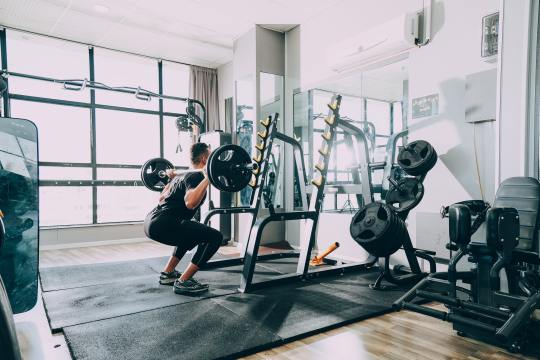
Photo by Sam Moqadam on Unsplash
Muscle mass benefits
Maintain normal bodily functions. As we age, we experience a natural loss of muscle mass called sarcopenia. This not only affects our normal bodily functions, such as walking, standing and lifting objects, but also makes people more susceptible to chronic diseases. The natural loss of muscle mass can be countered by strength training.
Promote bone Health: Strength training not only makes your muscles stronger, it also makes your bones stronger.Strength training has been found to increase bone density over time. Therefore, appropriate strength training will help reduce the risk of bone loss.
Improve athletic Performance: Strength training has been shown to improve individual execution the ability of various skills.
Regulate blood pressure. Research from the Mayo Clinic suggests that although weightlifting can cause temporary spikes in blood pressure, it may be dangerous for some people with cardiovascular disease.
Improve mental health: strength training has been found to be beneficial to your anxiety, depression and self-esteem levels had a positive effect. Therefore, strength training can has a meaningful impact on all aspects of the mind-body connection.
Summary
Ignoring your muscle mass can lead to an increased risk of serious health problems, from obesity to osteoporosis. Instead, maintaining adequate muscle levels will improve many aspects of your overall health, from your mental health to basic physical functions like walking and lifting weights.
Calculating a percentage of muscle mass can help a person monitor or maintain health, and as adults age, attention to muscle mass becomes more important. To better understand your condition, you can use the BodyPedia Smart scale to help you.
0 notes
Text
Breathing Exercises for Better Sleep
Insomnia is a common sleep disorder that makes it difficult to fall asleep or stay asleep. Insomnia can take a toll not only on your energy and mood, but also on your health, work performance, and quality of life. Insomnia affects 30 to 35 percent of adults, according to the American Academy of Sleep Medicine.
Stress is a common cause of insomnia because it keeps people awake, overthinking and unable to relax. About 30% of adults suffer from acute insomnia, while 10% suffer from chronic insomnia. Insomnia can lead to daytime fatigue, irritability, poor concentration and depression.

Photo by Sammy Williams on Unsplash
It's frustrating, but you can actually fight insomnia by breathing! Breathing exercises help reduce stress and anxiety and help you relax before bed. Studies have shown that these changes help us fall asleep.
The following seven breathing exercises can be done easily on your own to help encourage relaxation and sleep more easily.
Diaphragmatic Breathing
Lie on your back with your knees bent over a pillow or sit in a chair.
Place one hand flat on your chest and the other on your stomach.
Breathe deeply and slowly through your nose, keeping the hand on your chest still as the hand on your stomach rises and falls with the breath.
Next, breathe in slowly through pursed lips.
Eventually, you want to be able to breathe in and out without moving your chest.
This technique slows down your breathing and reduces your oxygen needs because it strengthens your diaphragm.
4-7-8 breathing
Gently part your lips.
Exhale completely, making a big whooshing or sighing sound.
Close your lips and inhale through your nose for 4 seconds.
Hold your breath for 7 seconds.
Exhale out of your mouth for 8 seconds, making the same whooshing sound.
Repeat 4 to 8 times
The 4-7-8 technique focuses on rhythmic breathing to reduce anxiety and help you fall asleep.
Three-part breathing exercise
Take a long and deep breath in.
Breathe out, focusing on your body and how it feels as you breathe.
Do this several times, slowing your exhale each time. Repeat until your exhale is twice as long as your inhale.
Three-part breathing is perfect for beginners. This breathing technique can help relieve stress and prevent panic attacks.
Buteyko breathing
Sit in bed with your mouth gently closed (not pursed) and breathe through your nose at a natural pace for about 30 seconds.
Breathe a bit more intentionally in and out through your nose once.
Gently pinch your nose closed with your thumb and forefinger, keeping your mouth closed as well, until you feel that you need to take a breath again.
With your mouth still closed, take a deep breath in and out through your nose again.
This relaxation method helps reduce yawning and sighing habits.
Box Breathing
Let out all of the air in your lungs to the count of four.
Keep your lungs empty for a count of four.
Inhale for a count of four.
Keep your lungs full for a count of four
Box breathing lowers blood pressure, helps you relax, and is effective against stress and anxiety.
Bhramari Pranayama Breathing
Sit in a quiet and well ventilated corner and close your eyes.
Place your index fingers on your ears right at the cartilage.
Breathe in and while breathing out press the cartilage with your fingers. ...
Breathe in again and out and continue the same pattern for around 6-7 times.
This breathing technique can lower your heart rate and blood pressure, readying your body for deep sleep. 、
Body Scan
Lie down in bed.
Take slow, deep breaths, scanning your body from head to toe in search of points of tension.
If you find yourself tense in any spots, inhale deeply.
Exhale slowly and visualize the tension leaving your body with your breath. Notice your body relaxing as you breathe.
Repeat this process for any other tense muscles in your body.
Follow this technique and you should find both your mind and body start to relax. Before you know it, you will be drifting off to sleep!

The next time you find it difficult to fall asleep, try practicing one of the seven breathing exercises above to get a better night's sleep. If you want to learn more about breathing exercises, the OPUMP breathing trainer can help. Plus, you can even use OPUMP for breathing exercises throughout the day to improve your spirit, mood, and sleep.
0 notes
Text
6 Breathing Exercises For Anxiety
Anxiety is the body's normal response to stress. It's part of the "fight or flight" response that occurs when someone is faced with a real or perceived physical or emotional threat.
Anxiety may energize you or help you focus. But for people with anxiety, fear is not temporary and can be overwhelming. In such cases, doctors tend to recommend trying breathing exercises.
Breathing exercises are often used to help people relax or cope with stress. They can be important because people with anxiety tend to breathe fast, shallow breaths through their chest. This pattern can disrupt oxygen and carbon dioxide levels that normally balance when you breathe. Breathing exercises can help people slow their heart rate and feel calm.

Photo by Joice Kelly on Unsplash
Chest vs. Abdominal Breathing
Most people aren't really aware of the way they breathe, but there are usually two modes of breathing:
Diaphragmatic (abdominal) breathing: This is the natural way a newborn breathes. You may also use this breathing pattern when you are in a relaxed sleep phase. This breath is a deep and even breath that engages your diaphragm, causing your lungs to expand and create negative pressure, which pushes air in through your nose and mouth, filling your lungs with air.
Chest (chest) breathing: This type of breathing comes from the chest and is short and rapid. When you're feeling anxious, you may not even realize that you're breathing this way.
The easiest way to determine your breathing pattern is to place one hand on your midsection near your waist and the other in the middle of your chest. As you breathe, notice which hand goes up the most.
It's especially important to be aware of these differences during stressful and anxious times when you're more likely to breathe from your chest. If you're panting from anxiety, you can try some breathing techniques to relieve the symptoms and start feeling better.

Photo by Marcos Paulo Prado on Unsplash
Deep Breathing
Deep belly breathing for 20 to 30 minutes a day can reduce anxiety and stress. Deep breathing increases oxygen supply to the brain. It also stimulates the parasympathetic nervous system and promotes a calm state.
4-7-8 breathing
The 4-7-8 breathing exercise, also known as relaxed breathing, is a natural sedative of the nervous system. To try 4-7-8, start by sitting up straight. Once you're familiar with these steps, you can also practice them in bed.
Exhale through your mouth, making a hissing sound.
Close your mouth and breathe in through your nose for a count of four.
Hold your breath for a count of seven.
Exhale through your mouth for a count of 8 and hiss.
Inhale and repeat three times.
Diaphragmatic Breathing
Diaphragm or abdominal breathing is designed to help you use the diaphragm as you breathe. It is a muscle that separates the chest from the abdomen. This allows you to use less effort and energy to breathe. It helps slow down your breathing rate and reduces your body's need for oxygen.
Breathe in slowly and deeply through the nose. Keep your shoulders relaxed. Your abdomen should dilate and your chest should rise very little.
Exhale slowly through your mouth. As you blow out, press your lips slightly, but keep your chin relaxed. On the exhale, you may hear a soft "whooshing" sound.
Repeat this breathing exercise. Do this for a few minutes until you start to feel better.
Box Breathing
Box breathing, also known as square breathing, is a technique used to breathe deeply and slowly. It can improve performance and concentration, as well as being a powerful stress reliever.
1.Exhale to a count of four.
2.Hold your lungs empty for a four count.
3.Inhale to a count of four.
4.Hold air in your lungs for a count of four.
5.Exhale and begin the pattern anew.
Pursed-Lip Breathing
The purpose of lip breathing is to make your breathing more efficient. This breathing technique will help make your breathing slower and more conscious. Lip contractions have been shown to help people with anxiety disorders related to lung disease.
Sit in a comfortable position, with your neck and shoulders relaxed.
Keeping your mouth closed, inhale slowly through your nostrils for two seconds.
Exhale through your mouth for four seconds, puckering your mouth as if giving a kiss.
Keep your breath slow and steady while breathing out.
Lion’s Breath
Lion’s breath, or simhasana in Sanskrit, during which you stick out your tongue and roar like a lion, is another helpful deep breathing practice. It can help relax the muscles in your face and jaw, alleviate stress, and improve cardiovascular functions.
The exercise is best performed in a comfortable, seated position, leaning forward slightly with your hands on your knees or the floor.
Spread your fingers as wide as possible.
Inhale through your nose.
Open your mouth wide, stick out your tongue, and stretch it down toward your chin.
Exhale forcefully, carrying the breath across the root of your tongue.
While exhaling, make a “ha” sound that comes from deep within your abdomen.
Breathe normally for a few moments.
Repeat lion’s breath up to seven times.
Everyone experiences anxiety sometimes. It's the natural part of the body that responds to a threat or danger. Breathing exercises are one of the best ways to deal with anxiety. Most breathing exercises are simple, OPUMP offers a variety of breathing exercises that can help people do them anywhere. If you still feel severe anxiety after breathing exercises, consider consulting a mental health professional or doctor for evaluation and treatment advice.
0 notes
Text
Breathing Exercises for COPD
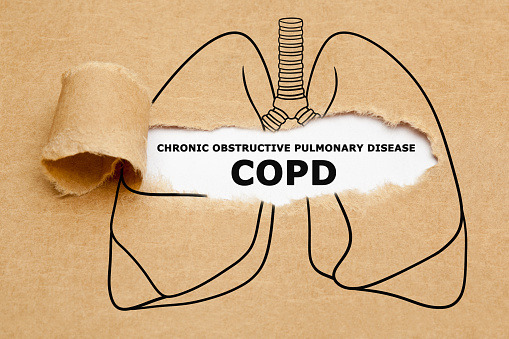
Chronic obstructive pulmonary disease (COPD), which includes chronic bronchitis and emphysema, is a long-term lung disease that causes difficulty breathing. The disease affects millions of Americans and is the third leading cause of disease-related death in the United States.
Difficulty breathing is one of the most disturbing symptoms of chronic obstructive pulmonary disease (COPD). Even if it happens only occasionally, the feeling of having trouble breathing can be uncomfortable and scary. But simple breathing exercises for COPD can strengthen the muscles you use to breathe, reduce breathing difficulties and improve quality of life.
4 Breathing Exercises for COPD:

Deep Breathing
Deep breathing can help your body take in more fresh air and prevent air from getting trapped in your lungs.
Sit or stand in a comfortable position, with your elbows positioned slightly back. This position allows your chest to expand more fully.
Take a deep breath and hold it for as long as you can.
Let the air out and then cough strongly.
Repeat these steps up to 10 times every hour.
Pursed Lip Breathing
This technique helps you slow your breathing and stay calm. It can be especially helpful before you start an activity or any time you feel short of breath.
Breathe in and slowly through your nose for one count.
Purse your lips like you are going to whistle.
Breathe out slowly through pursed lips for two counts. Let air come out on its own. Do not force it out.
Diaphragmatic Breathing
Diaphragm Breathing helps strengthen the diaphragm, one of the most important muscles used for breathing. With COPD, air often gets trapped in and pushes the lungs. As a result, people with COPD tend to use neck, shoulder, and back muscles more than the diaphragm when breathing.
Put one hand on your upper chest and one on your stomach.
Breathe in slowly through your nose. You should feel the hand on your stomach moving out. The hand on your chest should not move.
Breathe out slowly through your pursed lips. You should feel the hand on your stomach move in as you breathe out.
Controlled Coughing
A persistent cough can cause the airway to collapse, making breathing extremely difficult. A controlled cough occurs deep in the lungs, loosens up mucus and then carries it through the airways without causing collapse. It also saves oxygen.
Sit on a chair with both feet on the floor. Lean slightly forward.
Fold your arms across your belly. Breathe in slowly through your nose.
Lean forward and exhale, pressing your arms into your belly.
Slightly open your mouth and cough two to three times. Make your coughs short and sharp.
Gently and slowly inhale through your nose.
Rest
You can get more COPD specific breathing exercises in the OPUMP Breathing Trainer. Try these COPD treatment breathing exercises several times a day to help gain more control.
0 notes